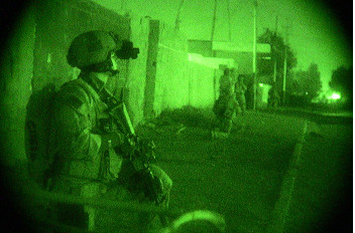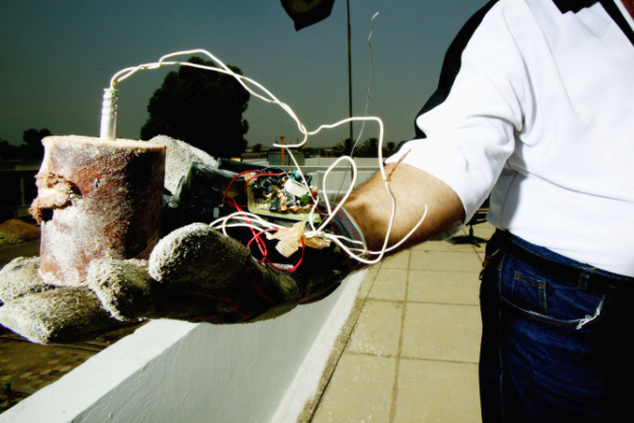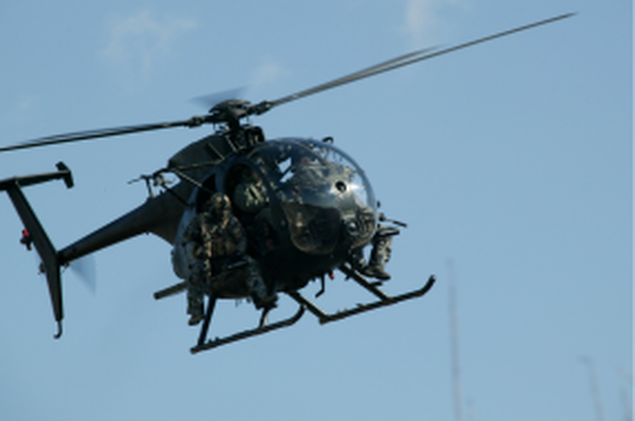By early 2007, some US intelligence estimates held that as many as 150 Iranian operatives were in Iraq. Many were member of the Quds Force, the covert arm of Iran’s Shi’ite theocracy. Their mission was to coordinate the violent campaign being waged against US forces by Iraq’s Shi’ite militias.
“It was 100 percent, ‘Are you willing to kill Americans and are you willing to coordinate attacks?’ ” said an officer who studied the Quds Force’s approach closely. “ ‘If the answer is “yes,” here’s arms, here’s money.’ ”
The Joint Special Operations Command (JSOC) set up a new task force, named Task Force 17.
Our own IED
But political restrictions hobbled Task Force 17, particularly as the US lowered its profile in Iraq. The country’s Shi’ite-dominated government, headed by Prime Minister Nouri al-Maliki, wasn’t happy with any attacks that targeted Iran operatives or their Iraqi proxies.
But for a small number of Shi’ite targets, JSOC found a way around the political restrictions by killing its enemies without leaving any US fingerprints.
The command did this using a device called the “Xbox.”
Developed jointly by Delta Force and SEAL Team 6, the Xbox was a bomb designed to look and behave exactly like one made by Iraqi insurgents, using materials typically found in locally made improvised explosive devices.
Its genesis was the training that Delta and Team 6 explosive ordnance disposal (EOD) personnel went through to learn how to disarm the homemade bombs. After capturing some intact on the Afghan and Iraqi battlefields, the EOD troops set about taking them apart.
It wasn’t long before they realized they could build them as well. “So they’re reverse engineering the whole thing,” said a senior special mission unit officer. A collective light went on in some corners of JSOC when leaders realized the possibilities inherent in this capability.
At first, the officer said, JSOC’s bomb makers used components typically found in the Afghanistan-Pakistan theater: “Chinese circuits and Pakistani parts . . . and explosives from old Soviet munitions, et cetera.”
The intent was to create a device that if it were sent to the FBI’s Terrorist Explosive Device Analytical Center in Quantico, Va., the Bureau’s experts would mistakenly trace the bomb back to a particular terrorist bomb maker because of certain supposedly telltale signature elements of the design that JSOC’s explosive ordnance disposal gurus had managed to re-create.
 SEAL Team 6 operators during a night mission in AfghanistanPhoto: U.S. Navy
SEAL Team 6 operators during a night mission in AfghanistanPhoto: U.S. Navy But the Xbox was different from regular IEDs in several ways, in order to reduce risks to operators and civilians.
First, unlike many IEDs, such as those detonated by vehicles running over pressure plates, it had to be command detonated, meaning an operator somewhere was watching the target and then pressing a button.
Another design requirement was that the Xbox device had to be extremely stable, to avoid the sort of premature explosions that often kill terrorists.
JSOC wanted to use the device to kill individuals, rather than crowds. “You’re just going to get the one guy in the car, you’re not looking to blow up 40 people in a marketplace,” said the senior special mission unit officer. “You’ve got authority for military force against one by-name guy. You’ve got to get positive ID and positive detonation in a place where you’re not going to get collateral damage. [For instance,] smoke the guy while driving his HiLux pickup in an area that there’s no US or coalition presence.”
Most insurgents JSOC killed this way were targets in southern Iraq — “a variety of folks that were running [the] Quds Force . . . pipeline and stuff in through the south,” the senior special mission unit operator said.
JSOC used reconnaissance operators, who are typically some of Delta’s most experienced, because getting the device into position, by placing it in the target’s vehicle, for example, was “a lot of work,” he said. It usually involved surveillance of the target for days on end, understanding his pattern of life — his daily routines — so that the operators could predict when they would be able to gain access to his vehicle unobserved.
When that time window opened, “then, like out of the movies, you’re picking the locks and going over walls and alleyways, very shortly placing that stuff in there,” he said.
The special mission unit officer acknowledged the possibility that JSOC might choose to use the Xbox on other battlefields — and might already have done so.
“We have successfully used this in places where you’re not flying a Predator, you don’t want to launch a missile, you don’t necessarily want to do a raid,” he said. “So if you get authorization for the use of military force, then you want something very precise against a target.”
But although the Xbox began with personnel recreating devices from the Afghan theater, it was not used there, where Team 6 was the lead special mission unit. “We co-developed it with Delta, but it was only being used in Iraq,” said a senior Team 6 source, who questioned the morality of using the device: “[It’s] a great tool, but as many of us have said — hey, we’re no different than the enemy if we’re just blowing people up with booby traps.”
Excerpted from “Relentless Strike: The Secret History of Joint Special Operations Command” by Sean Naylor, out now from St. Martin’s Press.
View the article



 RSS Feed
RSS Feed